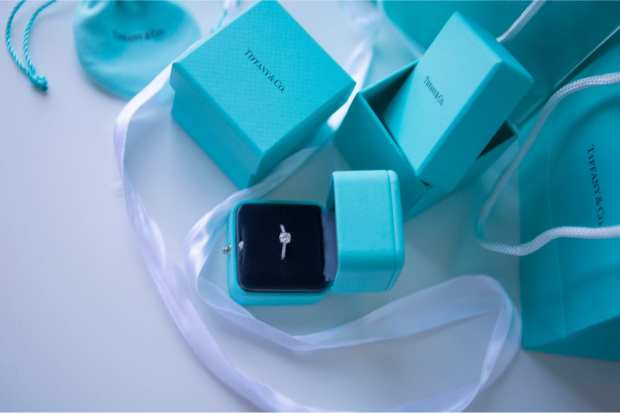Tiffany And Other Luxury Brands Find Creative Ways To Stay Relevant

As luxury brands warm up to the digital shift, many are finding creative ways to stay in front of their customers.
The latest example comes from Tiffany & Co. Over the weekend it graced customer in-boxes with new downloadable images to replace the awkward backgrounds the work-from-home era has ushered in on Zoom, Google Hangouts or other platforms. Now the distinctive Tiffany blue and in-store images can be the background of choice for Tiffany customers.
Tiffany and other luxury brands have been late to the eCommerce game, mostly because their business was based on in-store viewing and personal customer service. Tiffany’s most recent quarterly report shows the company only recently opened an eCommerce site in its most important market (China) and saw a 23 percent increase in Q1 over 2019 numbers. Now, eCommerce is 15 percent of the company’s total sales, compared to 6 percent in previous years.
“Before the crisis turned the world upside down, luxury goods purveyors, including French conglomerates LVMH and Kering, as well as Swiss group Richemont, had won over a generation of consumers obsessed with newness, exclusivity and glamour,” says fashion trade publication The Business of Fashion. “Success came from high-touch retail experiences and endless streams of novel products that ranged in price from prohibitively expensive for most to downright affordable for many. But that love affair has also been kindled by the digital age, which has allowed shoppers to engage with their favorite brands whenever and wherever they want.”
Pre-COVID estimates for the luxury market were on a positive trajectory, set for a 3.2 percent year over year growth. A June report from the Boston Consulting Group predicts a drop in sales of personal luxury goods from 25 to 45 percent due completely to the pandemic, so capturing eCommerce traffic and maintaining awareness until consumers can go back to stores safely is critical. One of the recommendations from the BCG report for luxury brands is to build an artificial intelligence (AI)-driven technology backbone and accelerate eCommerce.
“I really believe the online and offline worlds are ultimately going to converge,” said Jose Neves, CEO of luxury fashion eCommerce site Farfetch, on its most recent earnings call. “We’ve been pioneers in that vision four years ago for the luxury industry, in particular. Around a couple of years ago, we did an exclusive partnership with Chanel, a shareholder and innovation partner. We launched one-year ago in their number one flagship store in rue Cambon in Paris, the adoption has been absolutely exceptional both from consumers using the Chanel rue Cambon app and staff using our shop-floor app was all the connected experiences and connected products and devices that we have in store. That is extremely exciting.”
Could social media be a way to stay in front of consumers for luxury brands? The practice has not caught on in the European Union or the U.S., but it has been gaining momentum in China. From April through June, engagement on the posts of luxury accounts on Weibo, the Chinese social media network, increased 230 percent compared to 2019, according to Gartner, as cited in The Wall Street Journal.
In fact, luxury brands have been more creative in China in terms of staying in front of the customer. On Aug. 6, Louis Vuitton held a fashion show in Shanghai — its first since the pandemic. The show drew more than 50 million views on Weibo alone.
“The show’s popularity reflects the impressive performance of the Chinese luxury goods market,” says a statement from the Chinese state news agency. “In the face of the ongoing COVID-19 crisis, the global luxury goods market is expected to shrink dramatically, while sales of many brands in Europe and America have plummeted. However, assessments of the China’s market are far rosier. The financial reports of groups such as LVMH and Kering all show that sales in China were significantly higher than those in other regions in the second quarter of 2020.”
